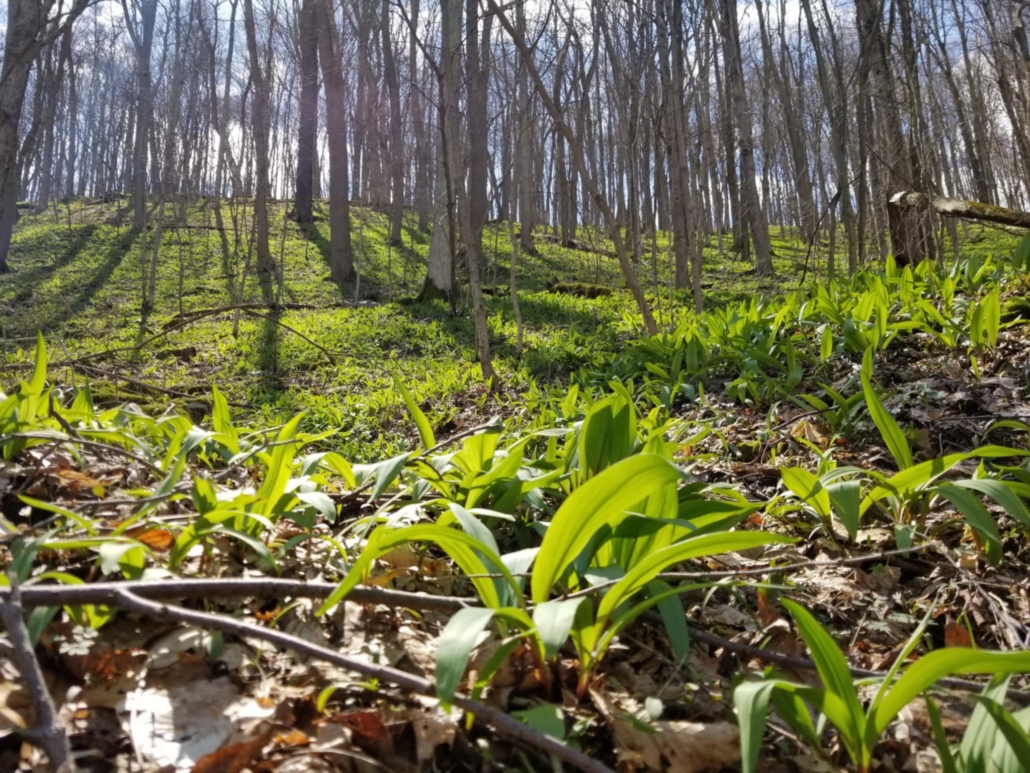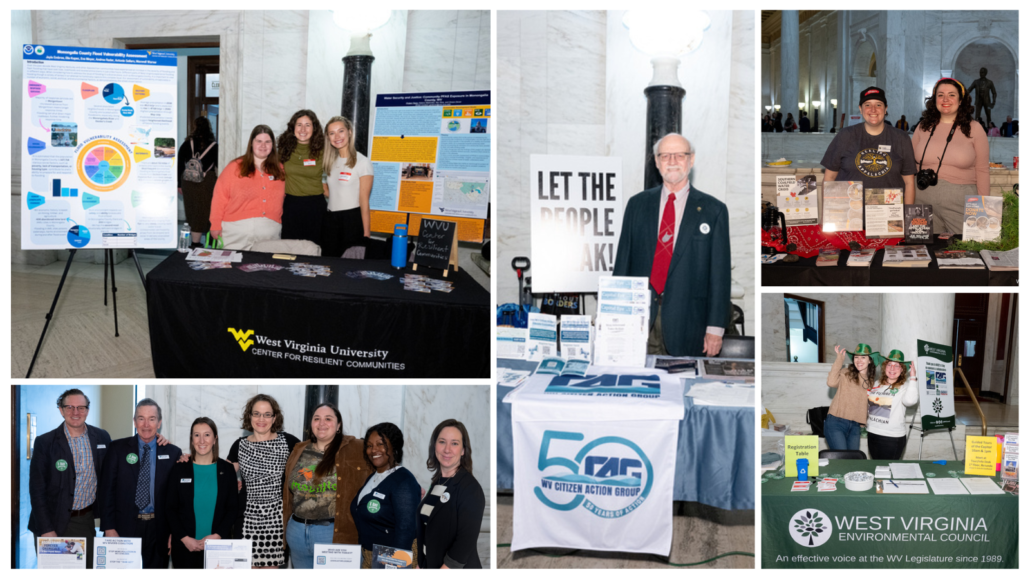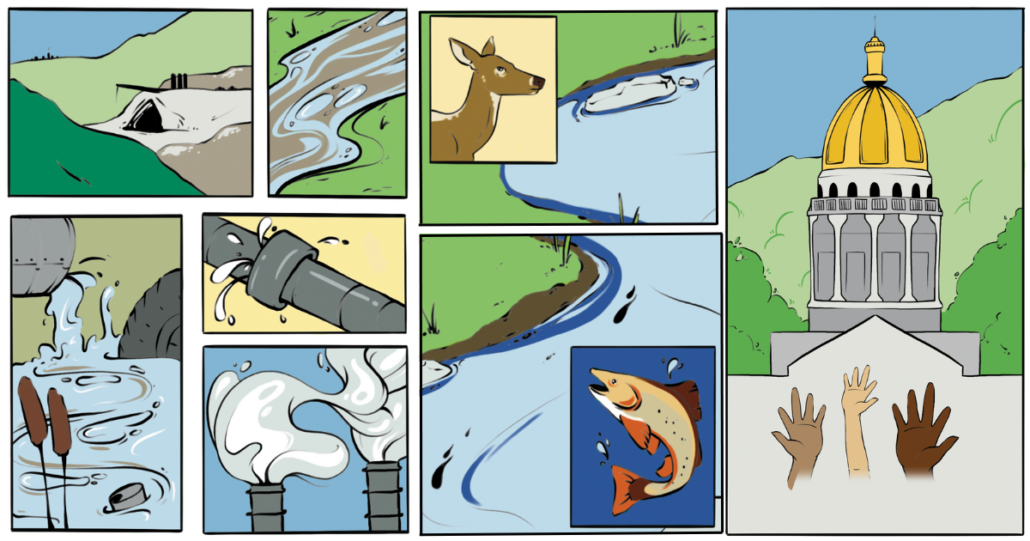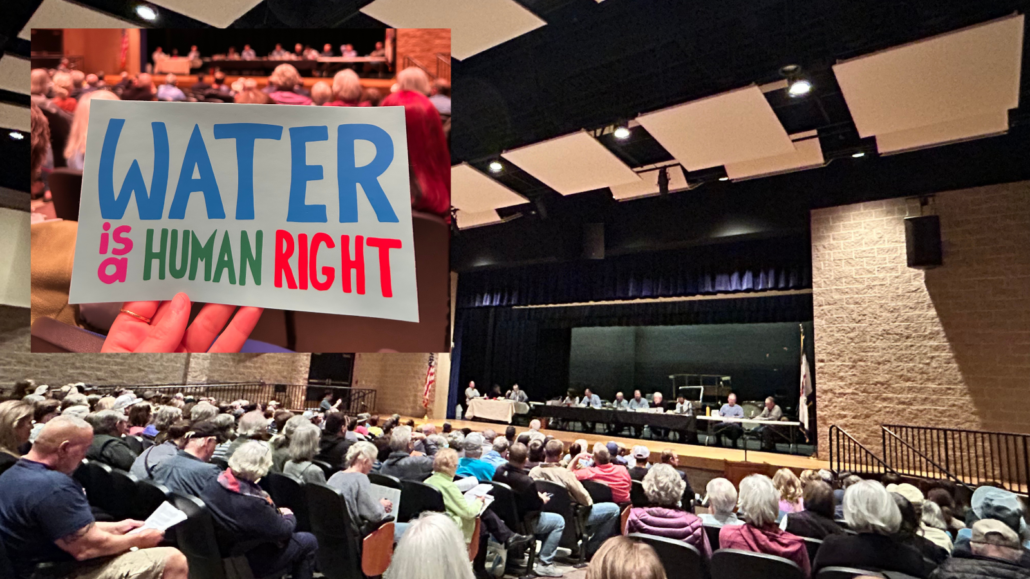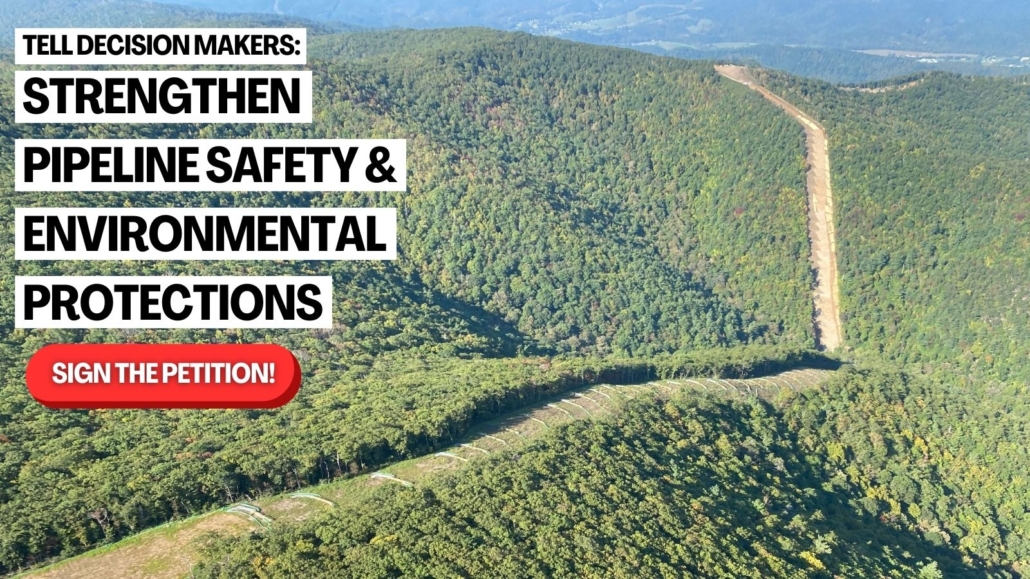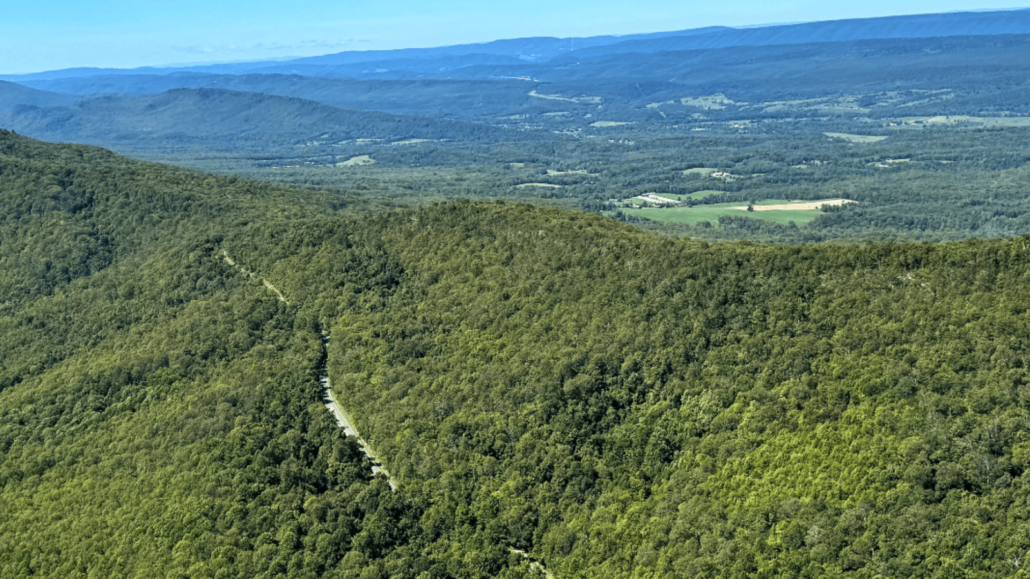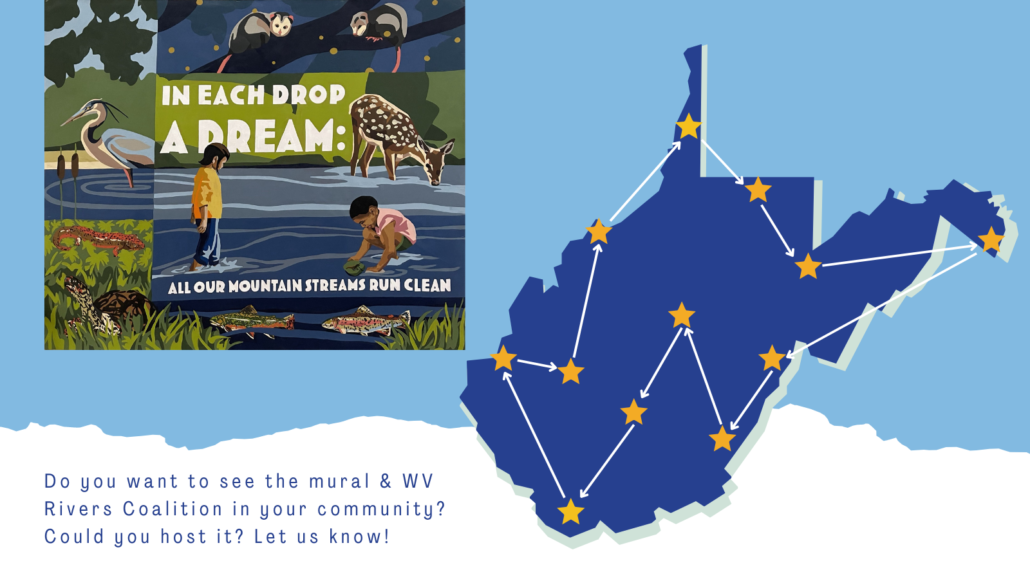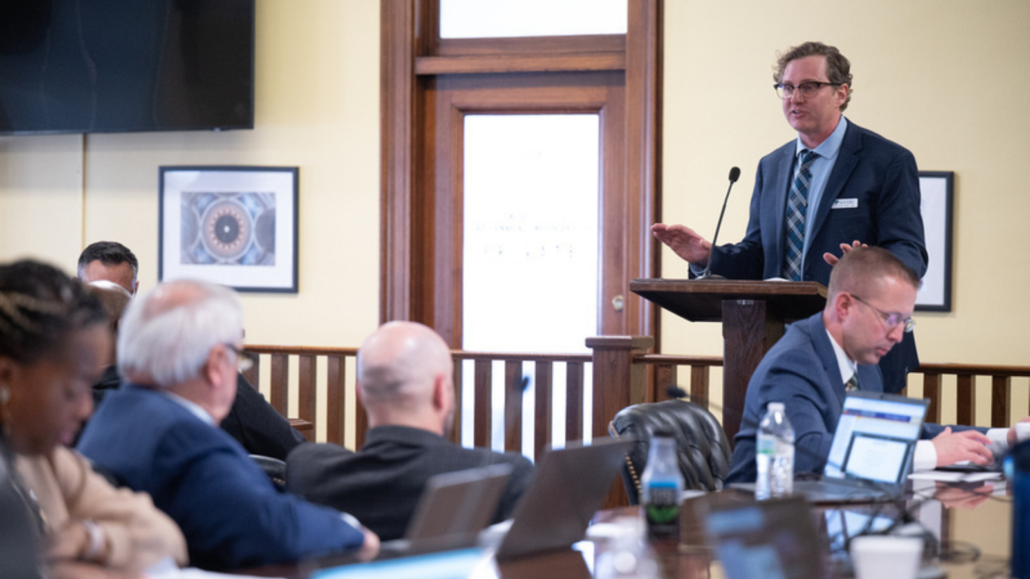Updates from WV Rivers Coalition
February 2025
Hi friends!
Each day, a new sign of spring is popping up to greet us — wildflowers unfurling in the woods, ramps pushing through the soil, and spring peepers calling from vernal pools. The sun lingers a little longer, warming the days and reminding us that change is underway.
With that change comes new opportunities to protect the places we love and safeguard the rivers and streams that sustain us. In this month’s digital newsletter, learn how WV Rivers is working to ensure clean, healthy West Virginia waters for all — and how you can get involved!
For clean water & healthy communities,
– WV Rivers Coalition
P.S. Make sure to check out the legislative hot takes and quick actions near the bottom this week!
It’s time! Ramps are here. Photo courtesy of Hannah Spencer.
Advocacy Days at the Capitol
Legislative Advocacy Days are some of our favorites — because we get to see so many of our incredible partners. Some pictured here: our team, WVU’s Center for Resilient Communities, From Below: Rising Together for Coalfield Justice, West Virginia Citizen Action Group, and our hosts, WV Environmental Council. All photos by Perry Bennet, WV Legislative Photography.
During the ongoing West Virginia Legislative session, WV Rivers has joined advocates, experts, and community members at several events at the WV State Capitol to share our clean water message and engage with West Virginians and lawmakers on the issues impacting clean water access statewide.
At Agriculture & Conservation Day, we talked with farmers and landowners about how protecting soil and forests helps keep our rivers and streams healthy — the very sources of our drinking water. During Black Policy Day, we joined conversations about equity and shared the importance of ensuring all communities have access to safe, clean water and air. At Environmental Day, we stood alongside fellow advocates to push for policies that protect West Virginia’s natural resources, including our wild and wonderful waterways and public lands.
Flood Resiliency Day, which was rescheduled due to the February flooding in Southern West Virginia, is now set for April 4. We will focus on reducing future flood risks — a vital step in protecting communities and the drinking water they depend on. We’re urging support for HB 3502, which would invest $250 million in the Flood Resiliency Trust Fund to help West Virginia prepare for the next flood.
Advocacy days are a powerful reminder that protecting our water is part of building stronger, safer communities — and your voice makes a difference.
Thank you to everyone who showed up and spoke out!
Check Out Our *New* Environmental Justice Resources
Illustrations for WV Rivers’ Guide to Environmental Justice were created by WV Artist Séamus Rionann.
Our new Environmental Justice Zine (a short, pocket-sized, magazine!) and landing page are live! Join us as we explore the connections between environmental issues and community well-being. This resource highlights how pollution, development, and policy decisions often impact vulnerable communities the most. Through examples, facts, and visuals, the zine empowers readers to understand these challenges and take action for a healthier, more just West Virginia. We are so incredibly grateful to have worked with Sèamus Rionann, a WV-based artist and illustrator, on the creation of this new resource.
Every West Virginian deserves a safe and healthy environment to live, work, and play — and that’s the kind of future West Virginia Rivers Coalition is working towards.
A Win for Clean Water and Community in Jefferson County
Hundreds of Jefferson County residents attended the Planning Commission meeting to advocate for clean water and historic preservation.
Hundreds had gathered. It was nearly 3:00 am on March 12 in the Washington High School auditorium in Jefferson County. The meeting had started at 7:00 pm the prior day.
That’s when, after testimony from 126 residents and nearly 1,700 written comments, the Jefferson County Planning Commission voted unanimously to reject a proposal for a water bottling facility that would have extracted enormous amounts of groundwater and would have jeopardized historic Middleway with truck traffic and pipeline development.
“This is a battle won for our community and our water resources,” said Stacy Chapman with Protect Middleway – an organization that came together to push back against this threat. “And we must remain vigilant as we move forward.”
Several other organizations joined Protect Middleway in opposition to this project, including Jefferson County Foundation, Jefferson County Farmland Protection Board, Jefferson County Historic Landmarks Commission, Potomac Valley Audubon Society, Conservation WV, and WV Rivers. In January, the Preservation Alliance added Middleway to its West Virginia Endangered Properties List given the threat this project posed.
“We all need clean water,” said Maria Russo, Policy Specialist with WV Rivers. “This win shows the power and resilience of our communities, as well as the deep connection that people have to the land and the water that sustains us. This is larger than any one project, this is about protecting our way of life.”
“The science didn’t hold up,” said Than Hitt, Senior Scientist with WV Rivers. “The applicants used a groundwater modeling tool that was inappropriate for karst terrain – even though their own data showed massive caves and karst features – and that gave us low confidence that this project would be safe for residential wells, farms, and wetlands nearby.”
Explore the MVP Story Map & Sign the Petition!
Aerial footage of the Mountain Valley Pipelines path courtesy of ABRA Airforce.
The MVP Story Map documents the Mountain Valley Pipeline’s impact on West Virginia’s communities and environment. It features firsthand accounts from landowners facing property damage, family farms disrupted by construction, and water quality monitors tracking impacts on local streams.
The map combines powerful stories with data and visuals to show how the MVP project has affected the region. Explore the map to learn more about the ongoing challenges and community efforts to protect West Virginia’s waterways.
Then, take action with us to tell Decision Makers: Strengthen Pipeline Safety & Environmental Protections!
Corridor H – Heads Up, Y’all!
Route 55 carves through the George Washington National Forest, with a sweeping view of the vast roadless area along the mountain chain to the left—a Virginia Mountain Treasure. In the distance, you can catch a glimpse of Wardensville and the controversial Corridor H. (Photo by the Allegheny-Blue Ridge Alliance)
Corridor H is part of the Appalachian Development Highway System, which was initially created in 1965. The Wardensville section of Corridor H is one of the few sections that hasn’t been built. Planned to merge onto I-81, Virginia has refused to continue Corridor H’s construction; thus, it is sometimes referred to as the “Road to Nowhere.” Here’s a map showing the proposed route.
The Town of Wardensville has expressed serious concerns about Corridor H, including impacts to businesses, the town’s drinking water source, and native brook trout streams. The final Environmental Assessment (EA) for the project is expected to be released in early April and will include an opportunity for public comments. Stay tuned to Friends of Blackwater and WV Highlands Conservancy for updates. You can also monitor this project on the federal permitting website here.
Spreading the Message of Clean Water Across the Mountain State
Thanks to the support of people like you, the Clean Water for All mural has traveled all around the state, but we need your help to keep it going!
The Clean Water Mural Tour has traveled to 12 communities across West Virginia, sharing the message that everyone deserves clean water for swimming, drinking, and recreation. Created by WV artist Nichole Westfall, the mural highlights the beauty and importance of our rivers and streams.
Originally painted at our 10-year anniversary event of the Elk River Chemical Leak in Charleston, WV, the mural has continued to spark conversations about protecting our water resources.
We’re now looking for new places to host the mural in 2025 and beyond. Does your community or organization want to host it next? Please complete the form below to let us know! We’d especially appreciate any help with moving and installing the mural.
Let’s continue spreading the message and protecting clean water for everyone!

